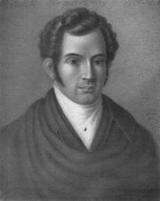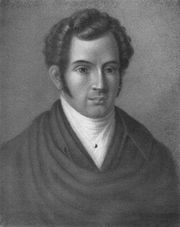
Magnus Jacob Crusenstolpe
Encyclopedia

Sweden
Sweden , officially the Kingdom of Sweden , is a Nordic country on the Scandinavian Peninsula in Northern Europe. Sweden borders with Norway and Finland and is connected to Denmark by a bridge-tunnel across the Öresund....
historian, early became famous both as a political and a historical writer.
Crusenstolpe won considerable distinction with a series of historical-romantic tales, (Little Stories); but his fame rests mainly on his works as a journalist, historian, biographer, and politician. His works of fiction become a degree political or progressive pamphlets see for example The House of Holstein-Gottorp in Sweden.
Biography
Crusenstolpe obtained a great influence over King Charles XIV, who during the years 1830 to 1833 gave him his fullest confidence, and sanctioned the official character of Crusenstolpe's newspaper Fäderneslandet. In the last-mentioned year, however, the historian suddenly became the king's bitterest enemy, and used his acrid pen on all occasions in attacking him. In 1838 he was condemned for one of these angry utterances to be imprisoned three years in the Vaxholm CastleVaxholm Castle
Vaxholm Castle sits on an island just east of the Swedish village of Vaxholm.The Castle was originally constructed by Gustav Vasa in 1544 to defend Stockholm against shipborne attacks from the east, but most of the current structure dates from 1833-1863. Russian prisoners-of-war were used in part...
. He continued his literary labours until his death in 1865. Few Swedish writers have wielded so pure and so incisive a style as Crusenstolpe, but his historical work is vitiated by political and personal bias.

